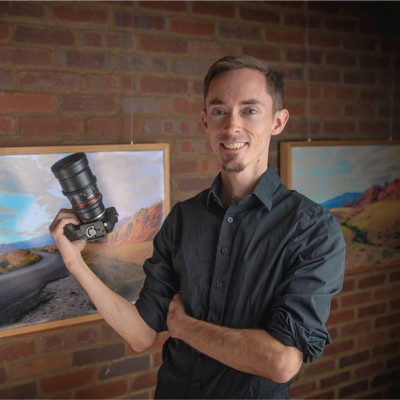
Zachary L. Highland
- Courses5
- Reviews19
- School: University of Louisiana
- Campus: Lafayette
- Department: Chemistry
- Email address: Join to see
- Phone: Join to see
-
Location:
104 East University Avenue
Lafayette, LA - 70504 - Dates at University of Louisiana: September 2017 - December 2018
- Office Hours: Join to see
N/A
Would take again: Yes
For Credit: Yes
1
0
Awesome
Dr. Highland was a great teacher. He makes his classes fun and enjoyable. He truly cares about each of his students and wants everyone to do their absolute best. I found was really useful that in his lectures he uses PowerPoint and fill in the blank notes are provided. I recommend that you go to lab, follow directions, study and do practice problems.
Biography
University of Louisiana Lafayette - Chemistry
Resume
2012
Doctor of Philosophy (PhD)
Chemistry
Louisiana State University
2008
Longwood University
Dynachem Research Center
Louisiana State University
University of Louisiana at Lafayette
Lafayette
Louisiana Area
Taught variety of chemistry curriculums in general
educational and analytical subject areas. Developed laboratory manuals with updated equipment obtained from authored grants.
Faculty
University of Louisiana at Lafayette
Provided programming and talks on health and well being related topics to the student body.
Longwood University
Augusta Health
Fishersville
VA
Worked with various biological samples for diagnostic and medical testing.
Medical Laboratory Intern
Lafayette
Louisiana Area
Sr. Chemist
Dynachem Research Center
Baton Rouge
Louisiana Area
Teaching Assistant: General Chemistry
Advanced Analytical Laboratory\nOnline media curriculum development: General Chemistry\nRecitation Instructor: Chemistry for Non Managers\nUndergraduate Research Mentor\nPrivate Tutor
Graduate Assistant
Louisiana State University
Created and implemented a digital library for the Regulation and Legal department.
nTelos
American Chemical Society
Alpha Chi Sigma
English
Travel Award
COACh Conference at NOBCCHE
COACh
Graduate Award for Excellence in Teaching
Chemistry 1431: Honor's Chemsitry
Louisiana State University
NOBCChE Advancing Science Travel Award
NOBCChE
Graduate Award for Excellence in Teaching
Louisiana State University
Department of Chemsitry
Invited Poster for SciMix; Southeast Regional Meeting of the American Chemical Society
Nashville
TN
American Chemical Society
Travel Award
Andrew’s Graduate Research Conference
Mississippi State University
Travel Award
Andrew’s Graduate Research Conference
Mississippi State University
Poster Competition
2nd Place
Andrew’s Graduate Research Conference
Mississippi State University
Graduate Student Teaching Award
Chemistry 4553
Best poster award
2nd place
Graduate Student Poster Competetion
Louisiana State University Department of Chemsitry
Bachelor of Science (BS)
Chemsitry
Alpha Chi Sigma\nPeer Health Educators\nStudent Health Partners\nBaptist Collegiate Ministries\nEpiscopal Campus Ministries\nMortar Board\nAlpha Lambda Delta\nNational Society of Leadership and Success
Longwood University
Alumni
2004
High School
Stuarts Draft High School
Heart of Virginia Free Clinic
Program Management
Community Outreach
Student Development
Teaching
Statistics
Microsoft PowerPoint
Microsoft Office
Data Analysis
Student Affairs
Gas Chromatography
Fundraising
Non-profits
Nonprofits
Higher Education
PowerPoint
Team Leadership
Research
Event Planning
Program Development
Public Speaking
Spatially selective binding of green fluorescent protein on designed organosilane nanopatterns prepared with particle lithography
A practical approach for preparing protein nanopatterns has been to design surface templates of nanopatterns of alkanethiols or organosilanes that will selectively bind and localize the placement of biomolecules. Particle lithography provides a way to prepare millions of protein nanopatterns with a few basic steps. For our nanopatterning strategy
organosilanes with methoxy and sulfhydryl groups were chosen as a surface template. Green fluorescent protein (GFP) was selected as a model for patterning. Areas of 2-[methoxy (polyethyleneoxy)6-9propyl]trichlorosilane (MPT-silane) are effective as a matrix for resisting the attachment of proteins
whereas nanopatterns with sulfur groups provide reactive sites for binding linker groups to connect proteins. A protocol with particle lithography was designed to make a surface template of nanopatterns of (3-mercaptopropyl)trimethoxysilane (MPTMS) surrounded by a methoxy terminated matrix. The sulfhydryl groups of the MPTMS nanopatterns were activated with a sulfosuccinimidyl-4-(N-maleimidomethyl)cyclohexane-1-carboxylate linker. The activated regions of MPTMS furnished sites for binding GFP. Samples were characterized with atomic force microscopy after successive steps of the patterning protocol to evaluate the selectivity of protein binding. Direct views of the protein bound selectively to designated sites of MPTMS are presented
as evidence of robust and reproducible patterning. Nanoscale patterns of proteins can be used for surfaces of biochips and biosensors
and also for immunochemistry test platforms.
Spatially selective binding of green fluorescent protein on designed organosilane nanopatterns prepared with particle lithography
Zachary
Highland
Ph.D.
nTelos
Augusta Health




